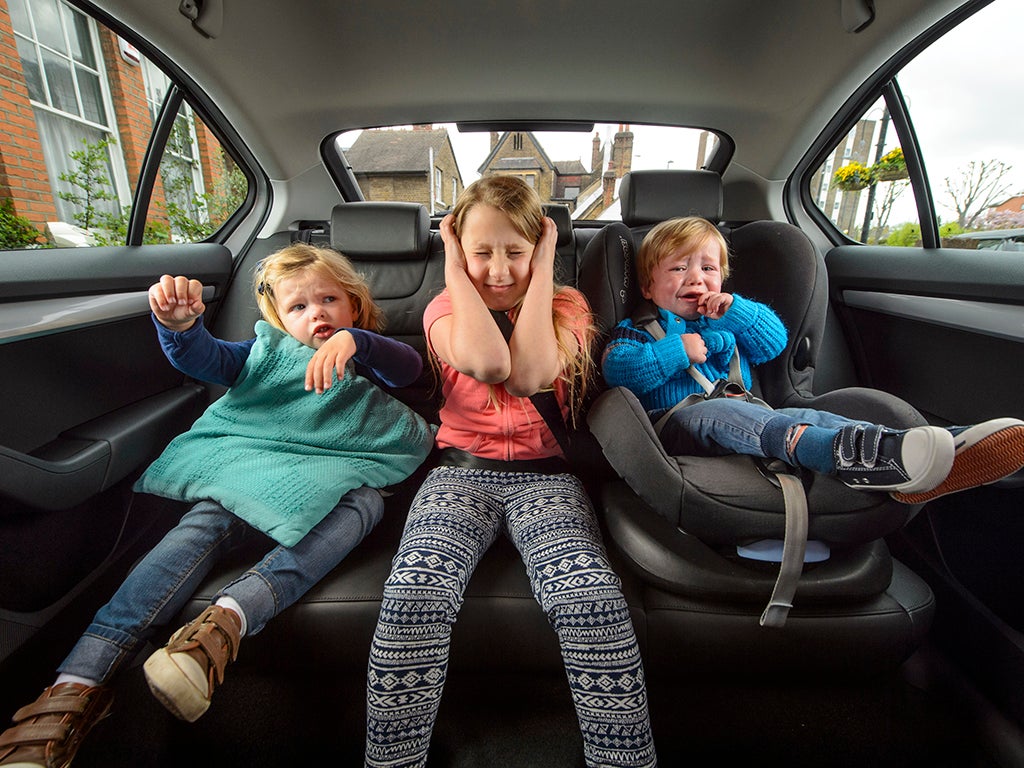Where children sit affects their personality and success later in life
90% of directors at work sat in the middle on family car journeys

Your support helps us to tell the story
From reproductive rights to climate change to Big Tech, The Independent is on the ground when the story is developing. Whether it's investigating the financials of Elon Musk's pro-Trump PAC or producing our latest documentary, 'The A Word', which shines a light on the American women fighting for reproductive rights, we know how important it is to parse out the facts from the messaging.
At such a critical moment in US history, we need reporters on the ground. Your donation allows us to keep sending journalists to speak to both sides of the story.
The Independent is trusted by Americans across the entire political spectrum. And unlike many other quality news outlets, we choose not to lock Americans out of our reporting and analysis with paywalls. We believe quality journalism should be available to everyone, paid for by those who can afford it.
Your support makes all the difference.A friend asked me recently about where we sit as a family when we’re around the dinner table. She was keen to know whether we had fixed seats and, if so, what dynamic this engendered between different family members, particularly our three children.
I thought about it for a while and realised that, yes, we all occupied the same position each night: my partner and I at opposite ends, and the kids along the middle. To her question about dynamics, I guess our arrangement was, in some way, reinforcing a particular pattern of behaviour. Certainly, when it came to eye contact, we were all seeing each other from the same angle, each night.
We’ve since updated our approach and now try to sit in different spots on some evenings. It’s the right move because, although familiarity is crucial for a family unit (particularly when children are very young), it’s more important as they get older to be flexible. To encourage different situations that challenge them emotionally and stimulate their sense of adventure.
Interaction between siblings is a fascinating business to observe for any parent, not just those of us who are also psychologists. And there was, I thought, no better place to watch this phenomenon unfold than around the dinner table.
That was until I started working with Škoda to promote its family model, the Octavia. New research has been released today about the impact of different car positions and how they impact children in later life.
As many families hit the roads this bank holiday weekend, parents will be confronted with the age-old dilemma of how to keep their brood occupied and behaving on long journeys. For those with more than two offspring, there’s also the added issue of who sits where.
Similar to the dinner table conundrum, careful selection is required. Car booster chairs may mean that one window seat is immediately taken by the youngest child, and a history of travel sickness or a headstrong eldest sibling may take care of the other. But what becomes of the “unfortunate” individual that ends up in the middle? Are they destined for a life of always having to compromise?
Not so, according to the research. These young folk should count themselves lucky for being a middle seat kid. In fact, in the survey of over 1,000 people (now grown up) with two siblings or more, 90% of those at a director level position at work sat in the middle on family car journeys. Even more tellingly, four fifths of these respondents believe that sitting between brothers and sisters directly contributed to their professional success.
The reality of these numbers really strikes home for me, as I can see the requisite characteristics for business achievement emerging in my own children. You see, we now not only rotate our dining positions, but our motoring ones too. They take turns in different formations in the back of the car.
Why? Because I believe it will make them more accommodating of other people, more in tune with others’ wants and needs and, ultimately, it will give them a heightened level of emotional intelligence. This belief has now been ratified through the research, as middle seat kids are shown to be reasonable, patient, level-headed and adaptable.
Of course, there’s an argument that successful business people need to be self-centred, driven and unwavering in the pursuit of achieving their goals. But we’ve all worked with people who possessed these traits, yet were unable to get the best out of the people that worked beneath them. True success is about choosing a destination and taking your colleagues with you on the journey to get there.
My advice is to keep mixing things up – rotate, as we do, the positions the kids occupy. Those in window seats may get caught up in the outside world, but the one between them will be all ears for conversation. Encourage this however you can. Ask questions, play games, tell jokes. Trust me, you’ll reap the rewards and, further down the line, they will too.
Laverne Antrobus is a family psychologist
Join our commenting forum
Join thought-provoking conversations, follow other Independent readers and see their replies
Comments